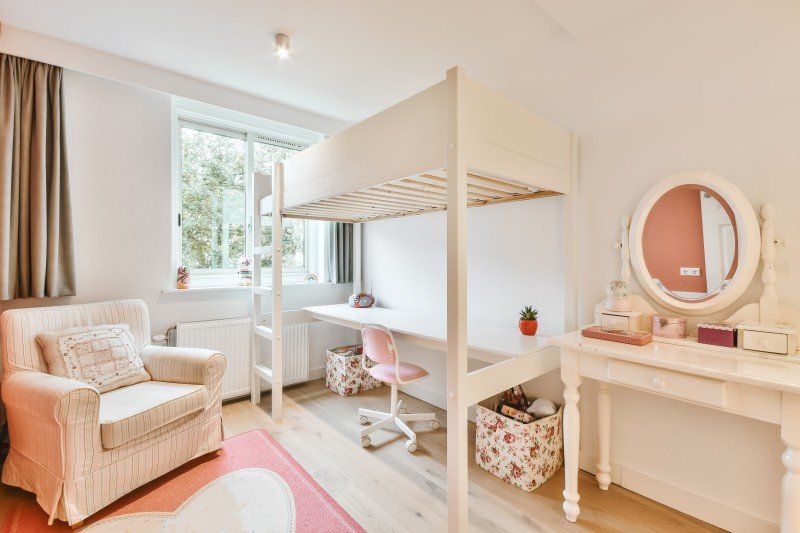20 Misconceptions About Bunk Beds: Busted
Exploring Bunk Beds: A Comprehensive Guide
Bunk beds have long been a staple in kids's bedrooms, dorm rooms, and even homes with minimal space. Not only do they supply a useful sleeping solution, but they likewise create an enjoyable and creative environment for kids and a great space-saver for adults and households. This post will explore everything you need to know about bunk beds, from types and materials to safety suggestions and purchasing recommendations.
Table of Contents
- Kinds Of Bunk Beds
- Standard Bunk Beds
- Loft Beds
- Triple Bunk Beds
- L-Shaped Bunk Beds
- Material Options
- Wood
- Metal
- Security Considerations
- Buying Guide
- Frequently asked questions
Kinds Of Bunk Beds
Bunk beds can be found in various styles to match different needs and preferences. Here's a breakdown of the most typical types:
Conventional Bunk Beds
Standard bunks usually include 2 beds stacked vertically on top of one another. Full Record are perfect for siblings sharing a room or for taking full advantage of sleeping space in visitor spaces.
Loft Beds
Loft beds stand similarly to conventional bunk beds however do not have a lower sleeping area. Rather, they often include a desk or seating area beneath, making them a great option for little rooms needing multifunctionality.
Triple Bunk Beds
Triple bunk beds are created for 3 residents, with beds stacked in a three-tier setup. These are less common however can be an enjoyable solution for large households or sleepovers.
L-Shaped Bunk Beds
With one bed placed horizontally and the other vertically, L-shaped bunk beds are typically geared up with extra functions such as desks or storage drawers and can match corner areas in a room.
Comparison of Bunk Bed Types
Bed Type
Suitable Use
Description
Traditional
Shared bed rooms or visitor spaces
Two beds stacked vertically
Loft
Little spaces needing multi-purpose space
Upper bed with open space below
Triple
Big families or sleepovers
Three beds stacked vertically
L-Shaped
Corner or versatile areas
A mix of vertical and horizontal beds
Product Options
Bunk beds are made from different materials, with wood and metal being the most common. Each material has its benefits and drawbacks.
Wood
- Resilience: Generally robust and can withstand years of usage.
- Visual Appeal: Offers a timeless appearance that can mix with various decorations.
- Weight Capacity: Typically sturdier; can support much heavier weights.
- Disadvantages: May be more costly than metal choices and can be vulnerable to scratches.
Metal
- Toughness: Generally light-weight and easy to move but still sturdy.
- Modern Design: Often can be found in streamlined designs, making it appealing for modern areas.
- Cost-efficient: Usually more economical than wood choices.
- Disadvantages: Can be cold to the touch in winters and might not have the same visual appeal for some buyers.
Safety Considerations
When it concerns bunk beds, safety can not be neglected. Here are key safety tips to keep in mind:
- Guardrails: Ensure that the leading bunk has guardrails on both sides to prevent falls.
- Sturdy Construction: Check for a solid develop and durable products to endure weight and movement.
- Weight Limit: Adhere to the maker's weight limitation for both the upper and lower bunks.
- Ladder Design: Choose bunks with a safe, easy-to-climb ladder and avoid any sharp edges or rungs.
- Age Restrictions: Most producers advise that kids under the age of 6 need to not sleep in the upper bunk.
Purchasing Guide
When looking for bunk beds, think about the list below factors to find the best suitable for your requirements:
- Space Availability: Measure the space size and ceiling height, guaranteeing there is appropriate space for the leading bunk.
- Bed Size: Decide between twin, full, or larger sizes based on your needs and the size of the space.
- Style Preference: Consider the general design of the bed room to discover an appropriate design.
- Relieve of Setup: Look for a bunk bed that is simple to assemble.
- Budget: Bunk beds can be found in numerous cost varieties, so figure out a spending plan before starting your search.
FAQs
1. What is the advised age for kids to sleep on the leading bunk?
Kids aged six and older are usually advised to sleep on the leading bunk to lessen the risk of falls.
2. How can I make my bunk bed more secure?
To boost safety, ensure guardrails are correctly installed and inspect that the bed is put on a flat surface area. In addition, motivate kids to utilize the ladder carefully.
3. Can I convert a bunk bed into 2 separate beds?
Many bunk beds are developed to be convertible. Inspect the producer's requirements for convertibility functions.
4. What devices are readily available for bunk beds?
Common accessories include bed linens, storage drawers, staircases instead of ladders, and tented canopies for an enjoyable visual appeal.
5. How do I maintain my bunk bed?
Regular checks for loose screws or structural integrity can assist make sure security. Dust the bed regularly and clean spills without delay to keep the products in good condition.
Bunk beds are flexible and a space-efficient solution for different living scenarios, from children's spaces to guest lodgings. With numerous designs and materials available, potential buyers have a wealth of alternatives to consider, ensuring a combination of usefulness and aesthetics. By prioritizing safety and following the tips outlined in this guide, people can discover the ideal bunk bed that suits their space and lifestyle, all while producing a pleasurable sleeping environment.
